The costumes in "Interview With the Vampire" are like a rich tapestry, intricately woven with threads of history and emotion. You can't help but notice how each character's outfit tells a story, from Lestat's eye-catching blue velvet waistcoat to Claudia's hauntingly beautiful gown. These choices aren't just about aesthetics; they reveal deeper themes of love, loss, and identity. So, how do these elements not only shape the film's gothic atmosphere but also influence modern fashion? The answer might surprise you as you explore the fascinating intersection of film and culture.
Overview of Film Costumes
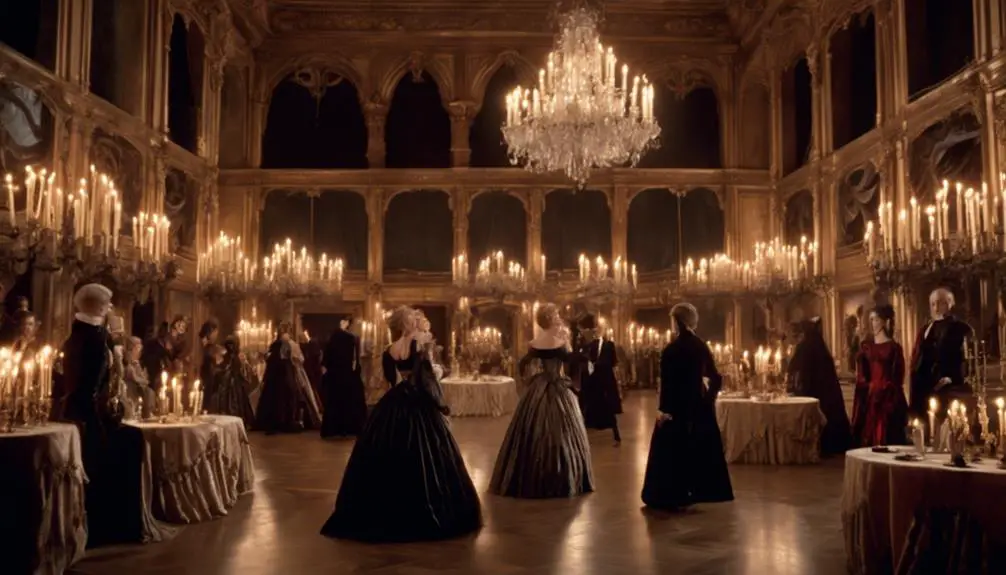
The film costumes in "Interview With The Vampire" serve as a stunning visual feast, showcasing the opulence of 18th-century fashion. Designed by Sandy Powell, the costumes create a rich tapestry of gothic horror filled with jewel tones and intricate details. You can't help but be drawn to Lestat's deep blue velvet waistcoat, a stunning piece that symbolizes his character's complexity and charm. Similarly, Claudia's striking blue gown captures her youthful innocence while hinting at her tragic fate, making it a pivotal element in character representation.
Each costume is carefully crafted to evoke sensory experiences, from the luxurious fabrics to the gold bullion embroidery that adorns Lestat's attire. The daily hair and makeup processes, which took over three hours, added to the film's dreamlike atmosphere, enhancing the overall fashion narrative. These stunning outfits not only reflect the era's fashion but also greatly influence contemporary gothic fashion trends. As you immerse yourself in this cinematic world, you'll find that these costumes are more than just clothing—they narrate stories of love, loss, and transformation, making "Interview With The Vampire" a rich visual experience.
Character Costume Analysis
Costumes in "Interview With the Vampire" intricately reflect the characters' emotional arcs and transformations throughout the film. Louis de Pointe du Lac's attire evolves dramatically, shifting from vibrant, expressive suits that initially convey his confidence to muted tones that symbolize his guilt and emotional struggles after becoming a vampire. This change in fashion captures his internal turmoil beautifully.
On the other hand, Lestat de Lioncourt's wardrobe is a flamboyant display of corseted designs, drawing inspiration from late 18th-century fashion. His striking blue velvet waistcoat with gold bullion embroidery showcases his timeless and rebellious nature, merging historical influences with modern gay fashion history.
Claudia, portrayed as a child trapped in an adult's body, wears costumes that shift from childlike sailor dresses to sophisticated adult silhouettes. This evolution visually represents her internal struggle with aging and her growing agency throughout the film.
The costume designer skillfully uses color palettes and intricate details to enhance character depth, turning fashion into a narrative device. Through these costumes, "Interview With the Vampire" not only tells a story but also immerses you in the emotional journeys of Louis, Lestat, and Claudia, making their experiences resonate profoundly.
Historical Fashion Context
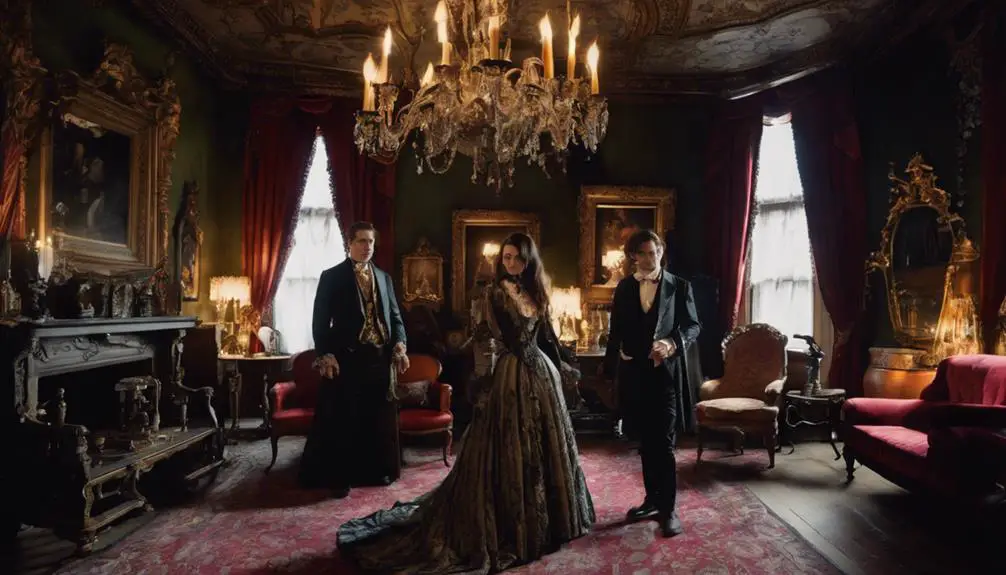
Set against the backdrop of the late 18th century, "Interview with the Vampire" immerses you in the opulence of French court fashion. The film showcases extravagant costumes that feature stays, panniers, and elaborate accessories, all embodying the era's lavish lifestyle. Costume designer Sandy Powell prioritized historical accuracy, ensuring that each outfit reflects the intricate details of 18th-century fashion, from rich fabrics to gold bullion embroidery and ruffles, enhancing the film's gothic aesthetic. Vintage fashion, much like the luxurious garments seen in the film, often carries a narrative of its own, revealing cultural shifts and personal stories through its evolution, as seen in the identification of vintage pieces.
As you watch, you'll notice how the costumes serve as a narrative device, visually portraying character traits and emotional states. The contrasting color palettes and styles highlight individual struggles and relationships, drawing you deeper into the story. The outrageous fashion elements cleverly parody the ostentatious styles of French nobility, capturing the essence of the period while commenting on themes of immortality and decadence.
Through these meticulously crafted outfits, you not only experience the shifts in fashion from the 1780s to the 1800s but also witness how these changes mirror societal norms and personal identities. The film's commitment to historical detail makes it a fascinating study of an era defined by its stylishness and complexity.
Cultural Impact of Outfits
Outfits from "Interview with the Vampire" have left a lasting mark on both fashion and pop culture, shaping how gothic and vampire aesthetics are perceived today. Sandy Powell's opulent costumes, rich in historical accuracy and luxurious fabrics, sparked a conversation about the intersection of fashion and identity within the vampire genre. Each costume isn't just fabric; it's a narrative device that visually represents character development and emotional states, making the film's storytelling even more compelling. The attention to detail in these costumes mirrors the evolution of Harley Davidson clothing, showcasing how fashion can embody a lifestyle and community spirit.
Claudia's striking blue gown, styled in 1920s Parisian fashion, symbolizes her complex character arc and has found its way into modern fashion collections, showcasing the enduring cultural impact of the film. The costumes contributed to a resurgence of interest in gothic styles, influencing designers and filmmakers alike. You can see their influence in contemporary fashion trends that embrace darker, more romantic aesthetics.
As you explore the film's wardrobe, you'll discover how these costumes not only enhance the characters but also invite discussions about beauty, identity, and the allure of the gothic, proving that "Interview with the Vampire" transcends its genre to leave a lasting legacy in both fashion and culture.
Future of Vampire Fashion
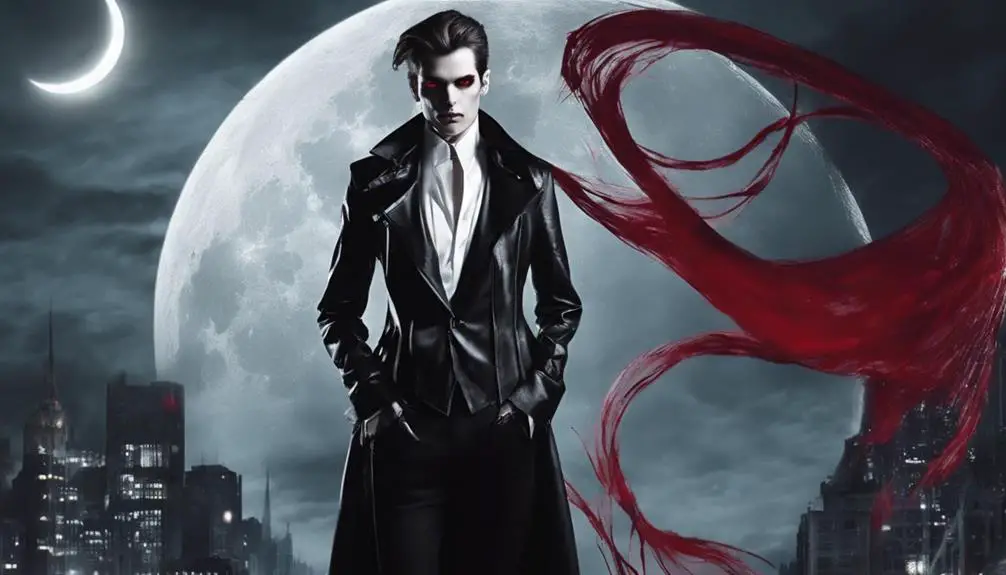
Vampire fashion is poised for an exciting evolution, merging historical elegance with modern flair as designers draw inspiration from timeless narratives. The ongoing popularity of vampire stories, especially with adaptations like *Interview with the Vampire*, has sparked a resurgence in gothic aesthetics among contemporary creators. Future vampire fashion will likely blend these historical elements with modern aesthetics, reflecting the characters' timelessness while appealing to today's fashion sensibilities.
Costume designers are set to explore deeper into the emotional depth of vampire characters, using innovative color palettes and unique silhouettes to express their complex identities and relationships. As we look forward, the exploration of post-war Paris and theatrical settings in new adaptations may lead to extravagant, avant-garde costume designs that push the boundaries of traditional vampire fashion.
This evolution will not only influence film and television but will also seep into streetwear and high fashion, proving that the intersection of fashion and identity remains essential. Expect to see a dynamic shift that celebrates the allure of vampire culture while embracing a modern twist, making vampire fashion a thrilling domain for both designers and enthusiasts alike.
Frequently Asked Questions
Who Designed the Costumes for Interview With the Vampire?
You'll find that Sandy Powell designed the costumes, drawing inspiration from historical accuracy and character evolution. Her fabric choices and color symbolism reflect deeper themes, showcasing a designer collaboration with significant fashion impact and cultural significance.
Was Johnny Depp in Interview With the Vampire?
Imagine a world draped in gothic shadows; you won't find Johnny Depp there. Though known for iconic performances and transformative roles, his fashion never graced the vampire aesthetics of this 90s film classic.
Was Tom Cruise in the Movie Interview With a Vampire?
Yes, you'll find Tom Cruise's portrayal of Lestat significant for character evolution. The vampire aesthetics and costume significance enhanced iconic scenes, influencing audience reception and contributing to the film's legacy in gothic horror.
Is Interview With a Vampire Inappropriate?
Over 70% of parents believe vampire themes in films require caution. With its horror elements and complex character portrayals, "Interview with the Vampire" often demands viewer discretion. Age restrictions and film ratings reflect its cultural impact.
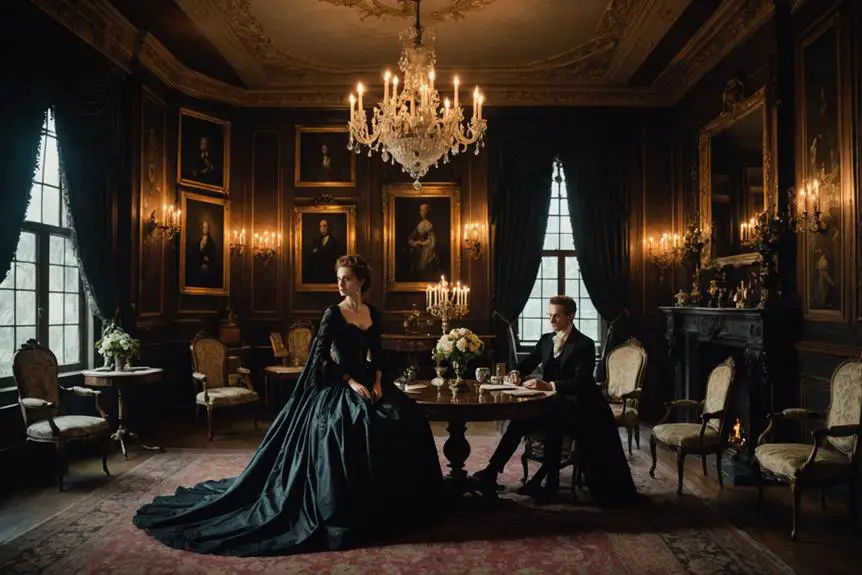


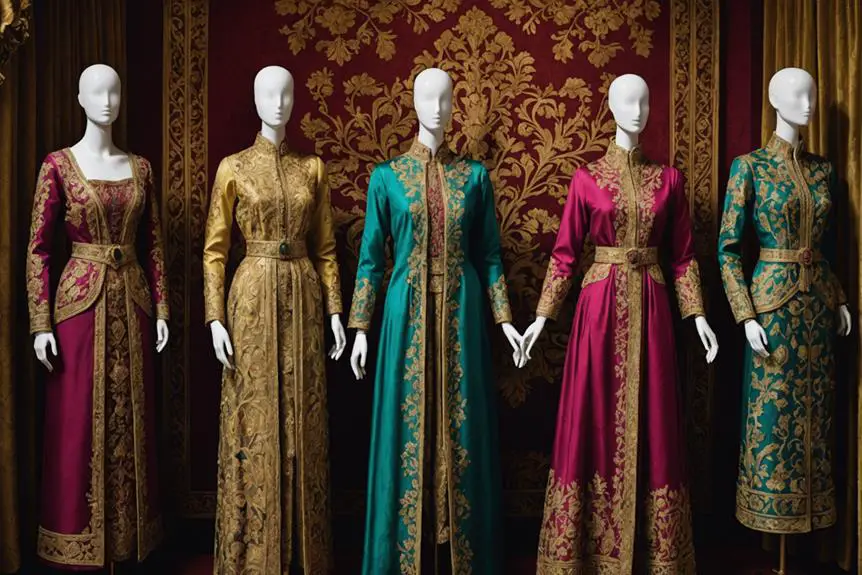
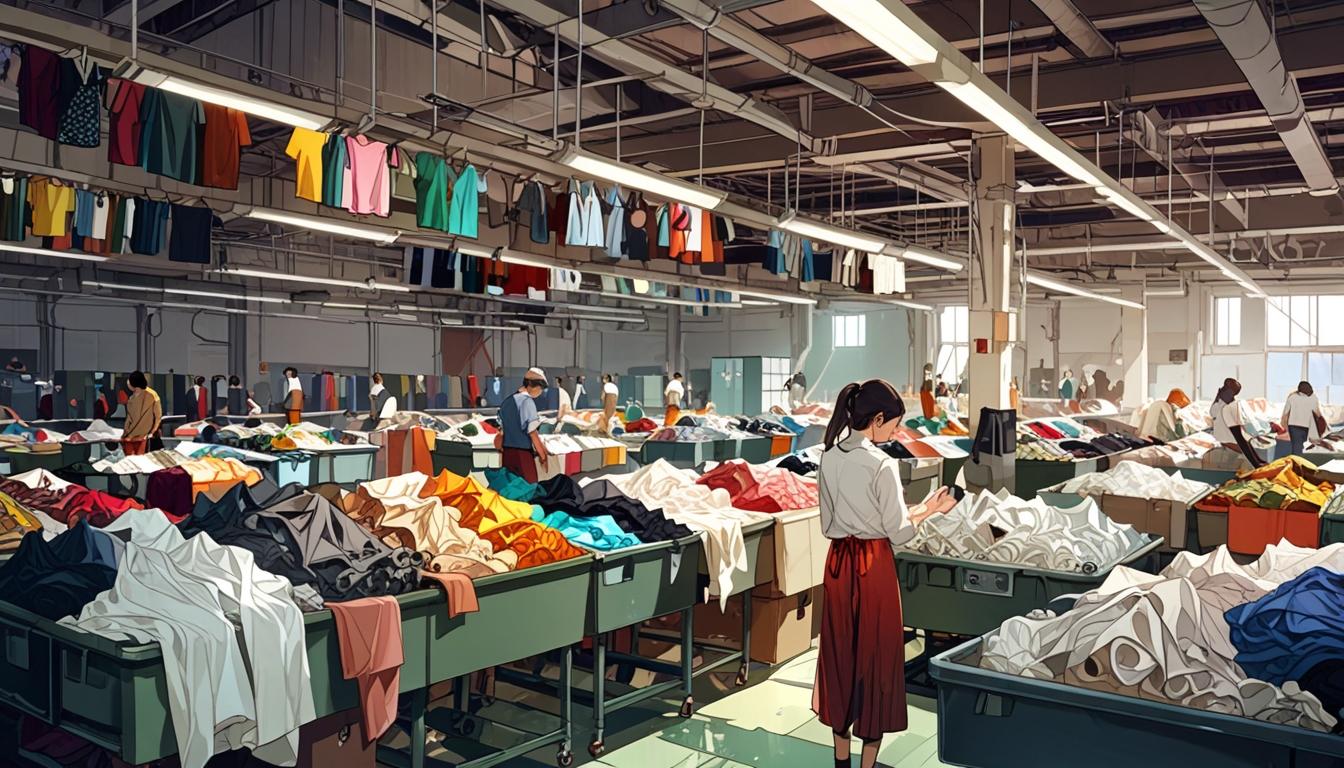
Aw, this was a very nice post. In concept I want to put in writing like this moreover – taking time and precise effort to make an excellent article… however what can I say… I procrastinate alot and by no means seem to get one thing done.